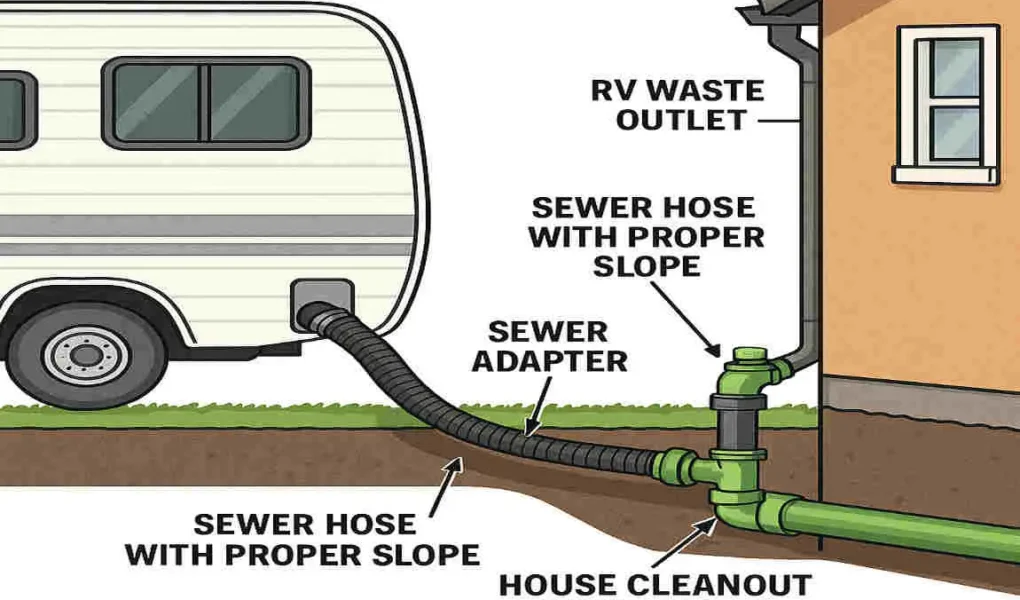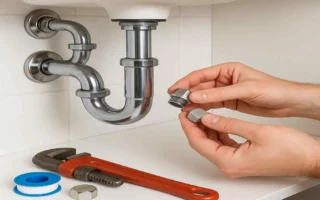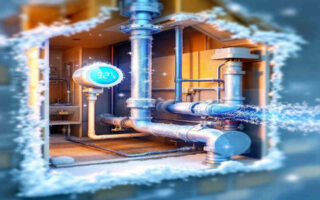If you’re an RV owner looking to connect your vehicle to a house sewer line, it’s crucial to do so safely and correctly.
Understanding RV and House Sewer Systems
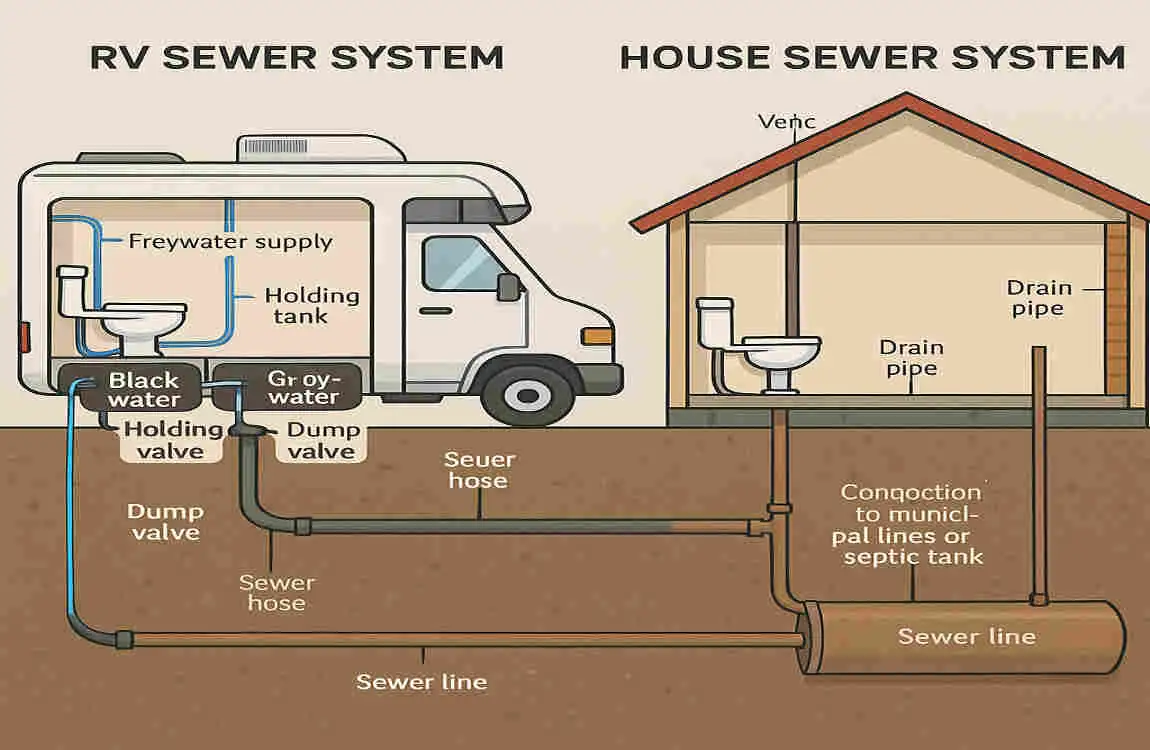
RV Sewer System Basics
Your RV’s sewer system is designed to collect and store wastewater from sinks, showers, and toilets in holding tanks. These tanks are typically located underneath the vehicle and are emptied through a sewer hose connected to a dump station or a sewer inlet.
House Sewer Lines Overview
A house sewer line is a pipe that carries wastewater from the home to the main municipal sewer line or a septic tank. These lines are usually larger in diameter than RV sewer hoses and may have different connection points.
Compatibility Considerations
When connecting your RV to a house sewer line, it’s essential to ensure compatibility between the two systems. RV sewer hoses are designed to fit specific types of connectors, and using the wrong kind of hose or adapter can lead to leaks or damage to your RV or the house sewer system.
Why Safety Matters When Connecting RV to House Sewer
Health Hazards
Improper RV sewer connections can pose serious health risks. Leaks or backups can expose you and others to harmful bacteria, viruses, and parasites found in wastewater. Inhaling sewer gases can also cause respiratory issues and other health problems.
Property Damage
A faulty RV sewer connection can lead to sewer backups, causing damage to your RV’s plumbing system, the house sewer line, and even the interior of your home. Repairing such damage can be costly and time-consuming.
Environmental Concerns
Leaking RV sewer connections can contaminate the ground and nearby water sources, harming local ecosystems and wildlife. Moreover, many municipalities have strict regulations regarding the proper disposal of RV wastewater, and failing to comply can result in fines or legal consequences.
Essential Tools and Materials Needed
To ensure a safe and secure RV sewer connection, you’ll need the following tools and materials:
- RV sewer hose (preferably 15-20 feet long)
- Sewer hose adapters and fittings
- Rubber gloves
- Sealant or lubricant
- Disinfectant wipes or spray
- Garden hose for rinsing
Choosing the Right Sewer Hose
Using an RV-specific sewer hose is crucial for a proper connection. These hoses are designed to withstand the harsh chemicals and waste found in RV holding tanks. Avoid using regular garden hoses or cheap, flimsy sewer hoses, as they can easily leak or burst.
Step-by-Step Guide: How to Connect RV to House Sewer
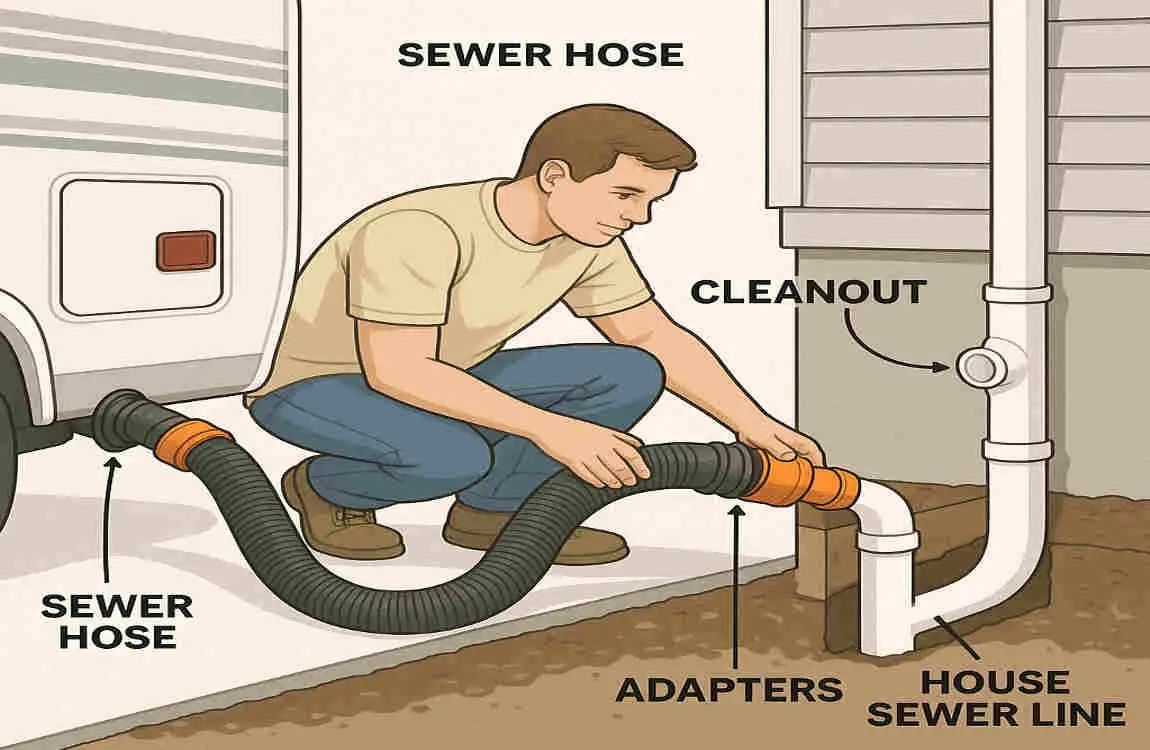
Prepare the RV Sewer Outlet and House Sewer Inlet
Begin by locating your RV’s sewer outlet, usually found near the holding tanks. Remove the cap and ensure the area is clean and free of debris. Next, locate the house sewer inlet, which may be a house clean pipe or a dedicated RV sewer connection point.
Clean and Inspect Connection Points
Using disinfectant wipes or spray, clean both the RV sewer outlet and the house sewer inlet to reduce the risk of contamination. Inspect the connection points for any damage, cracks, or obstructions that could hinder a proper seal.
Attach the Sewer Hose to the RV Outlet
Securely attach one end of the RV sewer hose to the RV outlet. Use the appropriate adapter or fitting if necessary, and make sure the connection is tight and leak-free. Some RV owners prefer to use a sealant or lubricant around the connection to ensure a proper seal.
Connect the Sewer Hose to the House Inlet
Carefully route the other end of the sewer hose to the house sewer inlet, ensuring that the hose is not kinked or twisted. Attach the hose to the inlet using the appropriate adapter or fitting, and double-check that the connection is secure.
Test for Leaks and Proper Flow
Once the sewer hose is connected at both ends, slowly open the valves on your RV’s holding tanks to allow wastewater to flow through the hose. Check for any leaks along the hose and at the connection points. If leaks are present, tighten the connections or replace any damaged components.
Safety Tips During the Connection Process
- Wear rubber gloves to protect your hands from contaminants.
- Avoid touching your face or any open wounds while handling the sewer hose.
- Wash your hands thoroughly with soap and water after completing the connection.
Common Challenges and How to Overcome Them
Incompatible Connectors
If you encounter difficulty connecting your RV sewer hose to the house inlet, you may need to use an adapter or a different fitting. Consult with an RV supply store or a house plumbing professional to find the appropriate solution.
Hose Slope and Drainage
Ensure that your sewer hose is sloped downward from your RV to the house inlet to facilitate proper drainage. If the hose is too flat or has low spots, wastewater may accumulate and cause backups or leaks.
Odors and Leaks
To prevent odors and leaks, make sure all connections are tight and sealed correctly. Use a sealant or lubricant if necessary, and regularly inspect the hose and fittings for signs of wear or damage.
Sewer Line Clogs
If you experience slow drainage or backups, there may be a clog in your RV’s holding tanks or the sewer hose. Use an RV-specific tank cleaner or a plumbing snake to remove the blockage. Avoid using harsh chemicals that can damage your RV’s plumbing system.
Maintenance and Best Practices After Connection
Regular Inspections
Periodically inspect your RV sewer hose and fittings for signs of wear, cracks, or leaks. Replace any damaged components promptly to prevent potential issues.
Sanitizing Connections
After each use, clean and sanitize your RV sewer hose and connection points with disinfectant wipes or spray. This practice helps prevent the growth of harmful bacteria and minimizes odors.
Proper Disconnection and Storage
When disconnecting your RV from the house sewer, carefully remove the hose from both ends and rinse it thoroughly with a garden hose. Allow the hose to dry completely before storing it in a clean, dry place. Make sure to cap your RV’s sewer outlet and the house inlet to prevent pests and debris from entering.
Avoiding Damage
Be cautious when handling your RV sewer hose and fittings to avoid damage. Do not drive over the hose or place heavy objects on it. When routing the hose, ensure it is not kinked, twisted, or stretched excessively.
Local Codes and Legal Considerations
Checking Local Plumbing Codes
Before connecting your RV to a house sewer, familiarize yourself with local plumbing codes and regulations. Some municipalities may have specific requirements or restrictions regarding RV wastewater disposal.
Permits and Restrictions
In some areas, you may need to obtain a permit or follow specific guidelines when connecting your RV to a house sewer. Contact your local health department or building authority for information on any necessary permits or restrictions.
Compliance and Avoiding Fines
Failing to comply with local codes and regulations can result in fines or legal penalties. Always prioritize safety and adhere to the proper procedures to avoid potential issues.
Troubleshooting Tips for RV to House Sewer Connections
Identifying Common Problems
Common issues with RV sewer connections include leaks, odors, slow drainage, and backups. Regularly inspecting your hose and connections can help you identify these problems early on.
Quick Fixes
For minor leaks, tightening the connections or applying a sealant may resolve the issue. If you experience slow drainage, check for clogs in your RV’s holding tanks or the sewer hose and remove them using an RV-specific tank cleaner or a plumbing snake.
When to Call a Professional
If you encounter persistent leaks, backups, or other issues that you cannot resolve on your own, it’s best to consult with a professional plumber or RV technician. They can assess the situation and provide expert guidance on resolving the problem safely and effectively.
Additional Safety Precautions
Personal Protective Equipment (PPE)
When handling your RV sewer hose and connections, always wear rubber gloves to protect your hands from contaminants. Consider wearing safety goggles and a face mask to avoid splashes or inhaling sewer gases.
Hygiene Practices
After completing the RV sewer connection, wash your hands thoroughly with soap and water. Avoid touching your face, eating, or drinking until you have cleaned your hands properly.
Emergency Protocols
In the event of a sewer spill or backup, immediately stop the flow of wastewater and contain the spill using absorbent materials. Notify the appropriate authorities and follow their instructions for cleanup and disposal. Thoroughly disinfect any affected areas and wash your hands and clothing to prevent the spread of contaminants.

